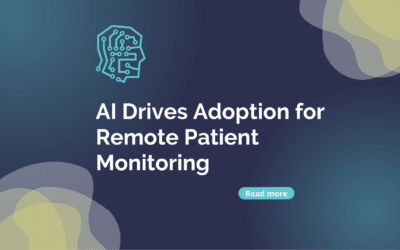By drastically reducing false positives, artificial intelligence tools make remote monitoring a more practical option for cardiologists and electrophysiologists
Remote patient monitoring (RPM) tools have been around – and performing at a high level – for years. In 2015, the Heart Rhythm Society (HRS) published a Consensus Statement that bestowed remote monitoring with a Class 1A recommendation, the society’s strongest possible endorsement.
And yet, adoption of these care-enhancing solutions has been relatively slow. By 2020, only one-in-five hospitals and health clinics had already adopted remote monitoring tools.
Part of this delay is due, no doubt, to simple inertia; it’s always difficult for any industry (especially one as large and complex as healthcare) to adopt new ways of doing things. Proper integration with electronic health record (EHR) systems has been another sticking point. And RPM has also been held up by antiquated healthcare reimbursement models.
One additional factor that has created a major snag in RPM adoption is the sheer volume of data produced by remote monitoring devices, such as implantable loop recorders (ILRs). As providers look to adopt remote monitoring at scale, they must leverage artificial intelligence (AI) tools to help them manage these new streams of patient information.
False Positives in Remote Patient Monitoring
A major problem associated with the deluge of data from RPM tools is the persistent presence of false positives. This problem is particularly acute for patients with ILRs. The devices need to be sensitive enough that they detect virtually all possible instances of a given problem – for instance, the presence of an arrhythmia. However, this sensitivity can capture a large number of events that are considered arrhythmias, that in fact, are not arrhythmias. These false positives aren’t mere annoyances, they burden clinicians with extra work, and effectively reduce the number of patients that any given clinic can support through RPM tools.
Reducing RPM False Positives with Artificial Intelligence
As healthcare providers look to scale up their use of remote monitoring, AI tools will become a crucial support solution. By running data from RPM systems through appropriate AI algorithms, clinicians can drastically reduce the number of false alarms, thus improving patient care and reducing the burden on clinical staff.
In December of 2021, Implicity announced FDA clearance for a novel AI algorithm that analyzes ECG data from Implantable Loop Recorders (ILRs). The tool, called ILR ECG Analyzer*, is an AI-based medical algorithm specifically designed to flag and remove false positives. ILR ECG Analyzer applies AI to the heart rhythm data collected from specified Medtronic LINQ models, improving the accuracy of irregular heartbeat detection and prioritizing “true” events that warrant further action.
According to a recent study published in the European Heart Journal, Implicity’s AI tool can reduce the number of ILR incidents that need review by one-third. During the study, the algorithm reduced the false positivity rate by 80 percent, while maintaining 99 percent sensitivity. Of more than 2,800 episodes processed by ILR ECG Analyzer, more than 1,200 were reclassified as normal rhythm. In a clinical setting, each of these reclassified incidents would translate to a reduction in the level of resources required to provide appropriate care.
A Path Toward an Actionable Care Model
As patients and providers have adopted RPM solutions during the COVID pandemic, both groups have seen the benefits and embraced the technology. It is highly likely that adoption will continue to accelerate as people increasingly come to rely on these solutions.
In the past, patients with implantable monitors have often been seen in-person for periodic visits. However, providers are far more likely to catch a problem through the continuous use of remote monitoring. Even if a patient is not experiencing symptoms, RPM solutions can detect a condition, and clinics can bring the patient in for earlier care. In the future, we are likely to see the rise of an “actionable care” model, with reimbursement models to match. That is, patients will receive care when they need it, based on actionable alerts.
This represents a huge improvement over the way care has traditionally been delivered. And AI tools, like Implicity’s ILR ECG Analyzer will be critical to making it happen.
* FDA cleared Class II medical device and CE marked Class I (under MDD) medical device, see the instructions for use for more information.

